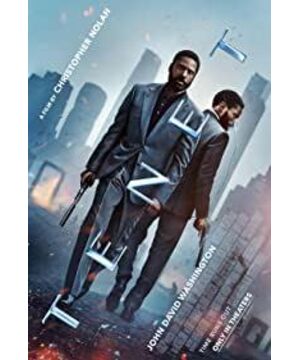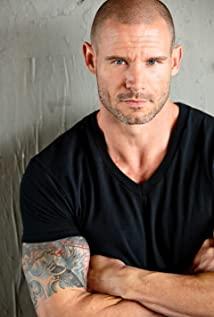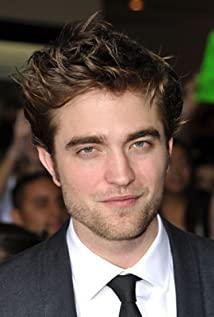"Creed" will undoubtedly be the most "extreme" type of existence in Nolan's works. In the current commentary context, this "extreme" is more or less derogatory.
And in terms of the degree of brain burn, it is definitely the "most" of all Nolan's works. The indiscriminate bombardment of various novel theories and visual concepts has puzzled almost all audiences. So there is also a movie-watching suggestion to borrow the lines of the movie: don't try to understand it, feel it.
However, excessive brain-burning is not the problem at all. The real problem is: the more you understand the story frame, movement logic and hidden details of "Creed", the more you can discover the extent of Nolan's mistakes and paranoia. .
1. Sound
On August 2nd, I went to the IMAX theater to watch the re-screening of Interstellar Interstellar. In addition to being shocked by the unique visual experience of the theater, I also discovered another point that I had not noticed before: " "Interstellar" whether it is the soundtrack, the sound effects, or the mixing of the two, the effect in the IMAX theater is unprecedentedly terrible (especially the explosion when Dr. Mann fails to dock). It is no exaggeration to say that I The internal organs are resonating.
Of course, after watching the movie, I just complained about this, and I still hold a positive attitude towards the sound effects of the movie. But what I didn't expect was that the "sound disaster" in "Creed" that I experienced a month later had already planted its roots.
The first thing to note is that I personally like the soundtrack of "Creed" very much. Compared to Nolan’s previous works with Hans Zimmer , the soundtrackist Ludwig Göransson still delivered such an exciting answer. Excluding the addition of a large number of percussion rhythm instruments and electronic music elements, the structure of the music also echoes the palindrome structure of the film as a whole, and the arrangement of the front and back is obviously a lot of thought. The deliberately noisy electronic sound also greatly strengthened the suffocation and anxiety that the audience experienced during the viewing process. In terms of the functionality and experimental nature of the soundtrack, the soundtrack of "Creed" is successful, but it is another matter to use it...
Going back to what I said before about the volume overload problem, this is also Nolan’s consistent operation. The loudness of the soundtrack and dialogue in "Interstellar" has approached the limit of the industry standard range , but it is limited by the specific environment in the theater. Under the special effects produced, the small flaws in the soundtrack overshadowing the dialogue can be tolerated/ignored.
But "Creed" is completely different. Nolan has abused the soundtrack/sound effects almost the whole time, reverberating the rhythmic soundtrack and the substituting sound effects roughly, and approaching the limit of the theater's audio power. In the end, what the audience hears is no longer the "sound", but the "noisy". Those melody that should have been staggered are finally integrated into a single track, and the audience's selection and perception of sound has finally turned into suffering, and the "audience feast" that should have been enjoyed has also become "noise pollution." What "Creed" did was so ridiculous that for a period of time I reasonably doubted whether Nolan had some kind of hearing impairment...
2. Fight
Nolan's action drama is not a day or two, mainly concentrated in the action drama in the "Dark Knight" trilogy.
The action scene in "The Mystery of the Shadow" is Nolan's most immature and his most typical failure case: in order to cover up the actor's botched actions, a large number of handheld photography + fast editing used in "The Bourne" are used to enhance the scene. feel. This kind of operation that strongly relies on audio-visual techniques is also helpless to a certain extent, but if used properly, the logic of the action connection between each editing point is clearly visible, and it can be turned into a cleverness (" The Moroccan indoor fights in "Bourage 3" is the best example). But "The Mystery of Xia Ying" completely exposed Nolan's poor thinking in dealing with action dramas, which is the most typical negative case. The movement between the fists and the feet is omitted, and the real moment of collision is not visible. What is shown to the audience is just a picture of the various soldiers being knocked down. There is no beauty, no process, or even logic. The action scene in "The Mystery of Xia Ying" is a complete disaster.
In "The Dark Knight" and "The Dark Knight Rise", Nolan learned how to behave. It is no longer just shaking the camera + fast editing, but changing to the shooting method of early Hong Kong martial arts movies: the shots are mostly based on the middle and long shots. Mainly, through the wide-angle panoramic lens to maximize the restoration of the actor's entire body movements, instead of deliberately limiting the perspective to a certain body part. At the same time, the number of editing is reduced, and the editing will not be carried out at the key nodes of the strike action, but will be cut to the next camera before the action is about to start or after the action is completed. The advantage of this is that the audience can fully see the range/strength of the movements of both parties in the fight, instead of using a partial lens to break down these movements. But there is a prerequisite for this, that is, the actor's own martial arts skills must be guaranteed, and the action design of the martial arts director must be good-looking. As everyone knows, it is the "epic" battle between Bain and Batman in "The Dark Knight Rises".
By the "Creed", Nolan finally began to pay attention to the physical fitness and action design of the actors. The male protagonist John David Washington was a professional rugby player before he switched to an actor, so the physical fitness is naturally nothing to say. And the motion design of the film has also put a lot of thought into it. The concept of forward and reverse fighting in the same space is very fresh. It is not only for good looks. When designing the action, it is also necessary to consider every punch of both forward and reverse. , The result of every block is the perfection of the causal chain. Judging from the final effect on the screen, Nolan finally overcomes his long-standing shortcomings in light motion design.
But at the same time, editing and photography have returned to the level of "The Mystery of Xia Ying": a large number of hand-held photography and fast editing, restricting the perspective to useless close-ups rather than complete physical presentations , and using editing to deliberately hide the real At the moment of collision, only the result of the punch is shown, and the sense of blow is missing here. Perhaps the problem of the narrow venue is that it severely restricts the movement of the camera, so most of the lenses can only be over-the-shoulder lenses, and there are no more choices. However, the lack of "strike" and "fluency" in the action scenes is still obvious, and it is far from enough to make up for it with sound effects. Of course, if you really want to say something bad, it's not as good as "The Mystery of Xia Ying", otherwise I would really denounce Nolan for "violating the heavens."
3. Disaster
Looking back at the Snow Mountain War in the second half of Inception, I can say without mercy that it was an absolute scheduling disaster. Perhaps it is limited by the PG-13 classification. The shootout scenes are trivial. There are only shots and shots. There is no real moment of destruction. The bullets do not seem to exist, only through the exaggerated performances similar to the shooting in the early movies. In order to understand the meaning of the picture . But fortunately, editing can still use the internal tension of the script to generate revolving and advancement, and use efficient multi-line narrative to maintain a sufficient audio-visual rhythm. So in any case, the overall third act of "Inception" is still excellent and interesting enough.
But the third act of "Creed" is really outrageous. One thing I really can't figure out is how Nolan made a work like "Dunkirk" and reverted back to "Inception". Worse standard? It can be said that the third act of "Creed" is completely an "upgraded and enhanced version" of the third act of " Inception " , which is a complete disaster. And not only that, while Nolan magnified his flaws highly, he also discarded what he was good at-editing.
Prior to this, Nolan had been working with Lee Smith, and when it came to "Creed", the editor was replaced by Jennifer Lame (the main works were "Manchester by the Sea" and "Marriage Story"). So will the change of the editing team have a non-negligible impact on the film? The answer is yes, and this influence is not limited to the third act, almost throughout the film.
The most direct point is reflected in the positive and negative dialogue. Telling the truth is also Nolan's old problem. The dramatic tension of most dialogue scenes can only be roughly based on lines and performances, and the image consciousness has almost never tried to intervene . Fortunately, Lee Smith’s editing concealed this well. Through the rhythm of the picture and the soundtrack, the sequence of different scenes, the conversion relationship between the design scene composition, and the priority of the line information processing, let The appreciation of the passage has been greatly improved.
So how does "Creed" do it? The setting and concept introduction of large sections are really only presented through pros and cons. The relationship between the scene and the space does not have any effective processing form at all, and it really only exists as a background board. The cross-editing used in the scene that planned the collision is obviously a poor imitation of Nolan’s previous works. The back and forth between the scene and the character did not generate any new meaning. The super-high-speed narrative rhythm is even more fatal to the emotional ups and downs. The audience can only do their best to keep up with the lines, and cannot experience any interactive movie-viewing brought about by the audio-visual level.
This is especially true for the drag racing scene in the middle of the film. The dislocation and lack of key information is the root cause of this brain-burning. Did Nolan deliberately omit key information? Absolutely not, Nolan completely exposed his shortcomings of poor scheduling, and did not have any clever ideas in editing to save the scene in time. No matter from which point of view, this car chase paragraph is quite confusing. After reading various film reviews and analysing the logic, you will be confused about Nolan’s intentions. Information and space are almost simultaneously broken. The perspective processing of both the forward and the reverse is complicated and inefficient, and the important time constant reference system Also destroyed by unnecessary quick editing. It was supposed to be an excellent conceptual spectacle presentation, but it was ruined like this by the creator...
Needless to say, the time-clamping action in the third act was more completely destroyed. Editing has been rushing since the introduction of the task, and the audience has no time to understand, so they can only "feel" like abandoning themselves. And the war scene? It can be said that the concept of "space" has almost completely disappeared, and Nolan relies all on the so-called "spectacles" on various "upside down" effects that go against human visual instincts. To put it cruelly, "Creed" in the third act is completely reduced to a large-scale track and field performance art supported by the Hollywood industrial system . Worse still, Nolan inherited the filming idea of "Dunkirk" without letting the enemy show up in all aspects, and grafted it into the action scene of "Creed", which pursues direct confrontation, plus crappy parallel editing. And the confusing character motives, the third act naturally becomes an annual editing/scheduling disaster (I really can’t imagine Nolan’s film will be so hip-cut in editing).
After thinking about it, I found that this disaster was not only the decadence of editing and scheduling, but also Nolan's most prominent author mark in Hollywood- live shooting .
Nolan's obsession with real-time shooting completely locks the upper limit of viewing in "The Creed". We all know that Nolan’s most direct method of simulating time-space reversal is to "rewind". Two groups of actors are acting in front or backwards, and then playing backwards in post-production, it's done! This is Nolan's operation to show such visual wonders. It’s not that it’s bad, but in the third act of the battle, you can clearly find many soldiers running slowly. That’s because they ran backwards at the shooting scene, so the action will only be done after the reverse processing. So weird.
But the problem is that many Nolan fans see this phenomenon as "a part that has to be sacrificed in order to persist in real-time shooting." This can't help but surprise me. Shouldn't it be the "visual effect" that determines the "shooting technique" instead of the "shooting technique" that determines the "visual effect"? Isn't this just turning the cart before the horse? If their logic is true, then this is simply Nolan's "visual bullying" of the audience, and all the fun of watching movies must be obtained from the technique, not the effect itself.
This kind of problem has also existed in Nolan's previous works, but the rhythm and rhythm formed by the combination of clever editing, narration, and soundtrack well conceal this defect. However, these points are almost all missing in the "creed". So the fact is that Nolan’s passion for live-action shooting is an act of kidnapping the audience’s naked taste, and it is also the most lethal backlash against his work.
4. Backlash
Speaking of Nolan, what do we think of first?
The non-linear narrative method of playing with time, the complex but extremely clear story line, the exploration of avant-garde concepts/settings, the immersion brought by IMAX film photography, and the obsession with real-life shooting. These elements, as Nolan's most typical author's imprint, have been carved into every film of different genres, and they are coincidentally glowing with Hollywood-style authorship. And this is one of the reasons why Nolan is so much sought after after the new millennium: his authorship is so dazzling in Hollywood today.
But in "Creed", those author elements that once brought me unlimited movie-watching pleasure are either missing, degraded, or changed in taste. So after the film ended, I couldn't help but have an idea that Nolan had insisted on the author's mark, and now it has begun to counteract his film itself.
The first is the form of the story. We all know that the type of film Nolan filmed this time is a "spy war film": given goals, recruiting troops, planning preparations, executing tasks, failing, executing again, failing again, remedial opportunities, decisive battles, countermeasures Turn around, save the world. In fact, according to this general framework, "Inception" already has the flavor of a spy movie (except that the protagonist is not controlled by the government, or betrays the government). But even under the uninterrupted "event-driven" framework, Inception still guarantees enough space for each important character to portray the characters. What "Creed" does is even more extreme: this time Nolan completely let concepts and events go first, and the characterization is all templated and patterned. To be more blunt, tool man. There are hardly any points worth remembering in the emotional drama. The only thing that stands out is the friendship between the male protagonist and Neal across time and space. However, how does this friendship appear? It's just a hasty description in lines towards the end of the film, and then, as Neil said, it came to the end. Even the "Dunkirk" with minimal script content is still rigorous in handling characters. Let's look at the role modeling of decent and villain in "Creed", especially the motivation, even the "reasonability" is lost...
As for the brain burning brought by narrative tricks, it is also a big selling point of Nolan’s works: Under the novel concept setting and high-density text information, Nolan can still guarantee the basic story line and logical framework, and Give the audience a specific mode of thinking. While following this mode, the audience will fall into the narrative trap dug by the creator and give a perfect answer. Making the audience confused, and then allowing the audience to find/understand the answer, is an important reason why Nolan is so sought after. But the brain-burning in "Creed" is really boring. Nolan wrapped a "terminator"-style script under a complicated conceptual setting, and used fast-paced narratives and jump-cutting techniques to slow the audience's understanding and digestion. That's right, it's delay rather than suspense. So the real brain-burning part is not how difficult it is to understand, but that there is no time for you to understand. The audience can only be "driven away" by the plot, so how can they "feel"? So the brain-burning nature of "Creed" is that Nolan is trying his best to cover up this familiar routine with clumsy techniques.
As for the visual effects, Nolan’s real shooting habit is so well-known that it has long become a familiar stalk in the movie fan circle. In the era of the proliferation of CG in Hollywood, his "old school" style is really pleasing, so that now one of the criteria for measuring a commercial blockbuster is the proportion of live shooting. I won’t mention whether this kind of ethos is absolutely correct. What I really want to say is a question that emerged after reading "Creed": Is Nolan’s obsession with "IMAX film" and "real-time shooting" fundamentally Locked his scheduling level?
IMAX70mm film photography is the top visual feast of the moment. According to Nolan, its highest resolution can even reach a terrifying 12K, almost no camera of the same level can reach this level. And Nolan has been shooting with IMAX film camera since 2008 "The Dark Knight" (except for "Inception", it can be seen from the frame that IMAX is not used). You can even say that IMAX is Nolan’s "author's privilege". The 1.85:1 frame is the most crude and effective visual identification symbol . When the texture of the IMAX real-time shooting appears on the big screen, we will involuntarily tremble and take this This feeling is conditioned like Nolan's name.
The awkward action clips in Nolan's works are completely different after being presented on the IMAX screen. As he expected, they are completely created for movie theaters. The details and particles on the screen are amazing enough. In front of the giant screen, the audience almost voluntarily succumbs to the control of the movie (if it is a mobile phone or a computer, the situation is completely opposite). Therefore, it can be concluded that the difference in screen size and resolution directly determines the difference in power status between it and the audience. And Nolan is using IMAX's unique advantages to cover up his shortcomings in scheduling.
But IMAX also has its shortcomings: the noise is too loud and extremely cumbersome. Since IMAX produces a lot of noise when shooting, Nolan uses another conventional film camera when shooting dialogue scenes. And Nolan particularly likes live radio, so I can't help but wonder if his movie sound effects are so exaggerated to cover up the noise of the live IMAX film camera (just a guess) . As for the problem of IMAX being too cumbersome, it has also been reflected in Nolan's previous works, which has largely restricted the choice of camera position and movement trajectory of the lens, and the decision-making of real-time shooting has made the execution more difficult. Therefore, under the premise of ensuring the visual effect, it is inevitable to sacrifice part of the scheduling concept.
So back to the problem I mentioned earlier: IMAX film photography and real-time shooting limited Nolan's scheduling level, and the visual effects on the screen can make up for this shortcoming. So Nolan may rely on this to deliberately ignore the importance of scene scheduling, and leave everything to IMAX's picture quality. With that said, does Nolan have fallen into a very unfavorable infinite loop, and "Creed" is the beginning of backlash?
In summary, while Nolan’s iconic authorship has brought countless highlights to his films, it has also inevitably produced many flaws. But it can be ignored under the delicate text structure. But "Creed" breaks away from the established model of Nolan movies in the past, and is even bolder than "Dunkirk". While pursuing the complexity of the narrative too much, Nolan's shortcomings that have been repeatedly criticized in the past have become more and more obvious. The accumulation of individual shortcomings will eventually affect the film and can no longer be ignored. Nolan's ambitions and his shortcomings swell infinitely in this film, and while his willful dream comes true, he has also reached the edge of enchantment.
So, after the defeat, what will happen to Nolan's next work? I think no one can predict. After experiencing the "creed" viewing gap, I can no longer say what Nolan's future will be, whether he will continue to fall into the trap or rebound from the bottom. This question is more brain-burning than the "creed" itself...
View more about Tenet reviews











